Case studies archive
More stories from the University of Bradford's research community.
Health and Care stories
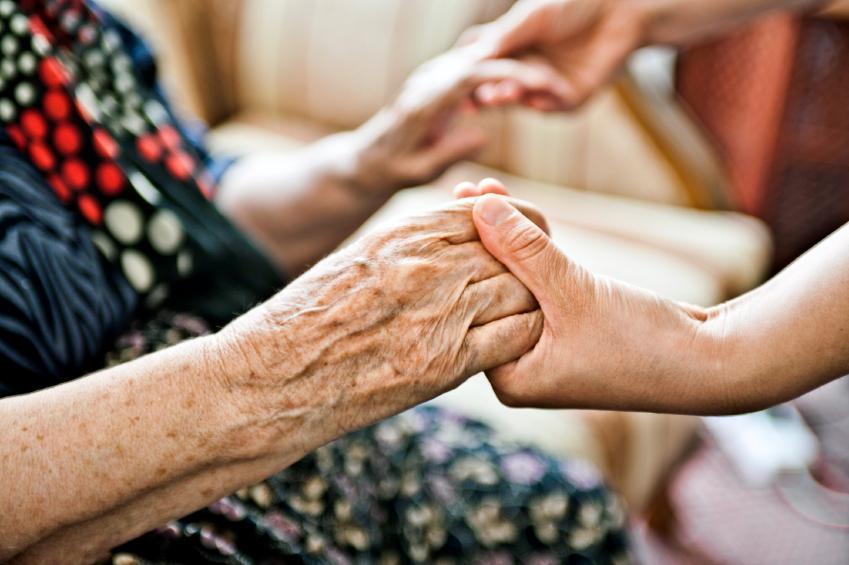
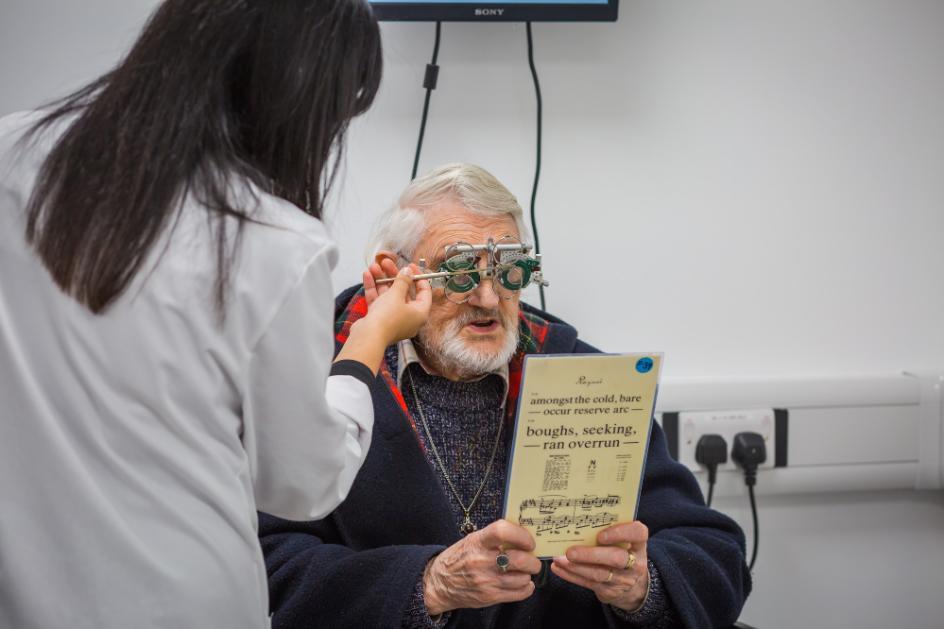
The very latest skin-care products on the shelves from the UK's premier skincare range No7 - are underpinned with ground-breaking scientific research from Bradford.
The University’s Centre for Skin Sciences has been working to understand the molecular mechanisms behind the body’s production of melanin – the pigment that causes our skin to tan and freckles to appear when it’s sunny. The over-production of melanin or hyperpigmentation also causes age spots (also known as liver spots) to appear as we grow older and consumers spend millions on cosmetic products to try to even out skin tone in ageing skin.
Within a raft of findings which shed new light on the skin pigmentation process, Bradford researchers discovered that tiny cellular tubes, called filopodia were instrumental in the transfer of melanin between human skin cells and were able to show how this happens.
Working with Alliance-Boots, the Bradford team has been able to use their research findings knowledge to test and measure the success of a range of natural plant extracts that could help to regulate and suppress the skin’s production of melanin. This work has enabled Alliance-Boots to develop new products in its leading No7 anti-aging serum range which can balance uneven skin tone and combat age spots – all backed with robust peer-reviewed research evidence from Bradford.
The new No7 products were launched in the UK in April 2012, and have since been launched in the US, Thailand and Finland.
So successful has the collaboration been, that Alliance-Boots and the Centre for Skin Sciences have entered into a partnership agreement to continue working together on future projects.
Research at the University of Bradford into the link between older people's vision and their likelihood of falling has led to new guidelines for optometrists and a change in the way spectacles are prescribed for older people at risk.
Falls are the leading cause of accidental death in older people, with around a third of people aged over 65 and half of those over 80 falling at least once a year. Treating elderly people following falls is estimated to cost the NHS more than £2.3 billion per year.
The Bradford team of vision scientists assessed how the kind of spectacles worn by elderly people affected the way they walked up and down stairs – which is when many falls take place. They found that people with single vision lenses adapted the way they walked to negotiate stairs more safely than those with bi- or varifocal lenses, even when they’d been wearing those type of glasses for many years.
The team also discovered the answer to an apparent paradox: although the link between falls and poor vision is well-established, when elderly people undergo cataract surgery or get new glasses to correct their vision, the number of falls may not improve and in some cases may actually increase. The Bradford researchers suggested that it is the sudden change in magnification caused by spectacles that causes the problem, and as a result optometrists are now recommended to make incremental changes in some prescriptions rather than correct vision in one big step.
The team’s findings have been incorporated into guidelines produced by the College of Optometrists and the British Geriatrics Society and endorsed by Age UK and the Royal College of General Practitioners. Visual impairment is also now included in NICE guidelines for the assessment and prevention of falls for older people. The findings formed part of a Which? Campaign, reported widely in the media, highlighting the unsafe practice of buying varifocals and bifocals online and the problems associated with higher-powered ready readers.
A new, more effective treatment for bladder cancer will soon be available to patients, thanks to research at the University of Bradford. The drug, Apaziquone, has been shown in clinical trials to significantly reduce recurrence of the disease.
Apaziquone was first developed in the 1990s as a treatment for a range of cancers, but then abandoned as it was not sufficiently effective. However, a team from the University of Bradford’s Institute of Cancer Therapeutics took a second look at the drug, to see why it hadn’t worked as expected. They discovered that the drug was quickly destroyed in the patient’s bloodstream and didn’t easily penetrate tumour tissue. Far from rejecting the drug as a result, they realised that this made it ideal for treating bladder cancer.
Bladder cancer is the fifth most common form of cancer in the UK, and treatment for the majority of cases is surgery, followed by chemotherapy. The chemotherapy drug is administered directly into the bladder, rather than into the bloodstream. Using Apaziquone in this way would ensure it wasn’t destroyed before it could reach the tumour, giving it a chance to work to its full potential.
An initial trial was carried out in Bradford, which showed that the drug worked as the team expected, leading to more extensive trials in Europe and America. Typically, within five years of treatment, around 80% of patients with bladder cancer have a recurrence of the disease. Of those treated with Apaziquone, only 49.5% have seen the disease return after two years.
The success of the trials and the reduction in recurrence rates has led to the drug being awarded ‘fast track’ status by the Food and Drug Administration in the USA, a process designed to speed up the development and approval of drugs for treating serious diseases. Further clinical trials are underway, and it is hoped the drug will soon be available widely for use with patients.
A toolkit for helping to reduce medication errors in children's hospices has been developed by Bradford researchers in health Management, Quality and Safety and widely adopted across the UK.
The toolkit enables hospice managers to review processes and implement improvements that ensure that medicines safety is a priority.
Around 8,000 children receive care within the UK's hospice system and many of them have complex needs and medication regimes. The Bradford Medicines Management Team have many years’ of experience investigating medication error management: previous research, funded by the Department of Health, led to the design of a novel medication error reporting scheme. Other research within the team has focused on the adult hospice system, identifying the impact on staff and their managers of reporting errors.
The need for the toolkit was identified by Children’s Hospices UK, now called Together for Short Lives, and its development was funded by the Department of Health. It focuses on key areas of risk, enabling hospice staff to identify the weak points in systems and processes. Advice on medicines regulation is included, as well as on the competencies needed to administer medication regimes. There are also guidelines on medicines reconciliation and transcribing, non-medical prescribing and error reporting.
Since its publication in 2011, 49 hospices across the UK have adopted the toolkit. Staff within these organisations have participated in a cultural change in which they now feel encouraged and supported in reporting errors and near misses. In many organisations the number of reported incidents within hospices and dispensing errors from NHS Trusts has increased, but not the number of incidents in which harm has been caused.
Regular reviews of all reported mistakes and the circumstances in which they were made have led to significant reductions in medication errors from both hospice staff and from NHS Trusts. These improvements mean a reduced risk to the children in these organisations’ care.
World-leading research from the University of Bradford has transformed policy and practice in dementia care, improving the quality of life for people with dementia across the world.
Researchers from Bradford Dementia Group were the first to develop a model of person-centred care (PCC) for people with dementia, which focuses on understanding the perspective of the patient and helping them live better quality lives with their condition.
Using the PCC model, the Bradford researchers created a tool, which can be used to assess how well care is being provided and show how care can be improved. This tool – known as Dementia Care Mapping (DCM) – has been shown in trials to reduce falls and agitation amongst dementia patients and now forms part of NICE guidelines on supporting people with dementia.
DCM is also used in examples of good practice by the Department of Health and is recommended by the National Audit Office as an effective measure of quality of life for people with dementia. The Bradford researchers also created a shorter version of the tool – called the Short Observational Framework for Inspection (SOFI) – which is used by the Care Quality Commission in their inspections of UK care homes, to assess the quality of care.
The Bradford Dementia Group also provide training in the use of DCM to care home staff both in the UK and abroad. Over 10,000 care home staff have now been trained to use the tool in the UK, and the training has also been delivered to over 3,000 care home workers in Australia, Denmark, Germany, Japan, the Netherlands, Germany, Singapore and Switzerland.
Access to, and engagement with, health services for disadvantaged communities has been improved - thanks to a research framework developed at Bradford.
The capabilities framework aims to understand and address equality, diversity and inclusion issues as viewed by health organisations when formulating policy and practice. The framework has been adopted by a range of organisations leading to improved community health and wellbeing.
Researchers from the School of Management worked with a national social research think tank which led to an on-going collaboration between the researchers, the NHS, a social enterprise and the think tank. By focusing on community health issues, these organisations have used the framework to enhance equality, fairness and quality of life through the redesign of these services.
The researchers found that, where community-level concerns were given a clearer and relevant voice, the solutions were more appropriate and effective - leading to increased engagement. For example, the participating Primary Care Trust (PCT), began using community nurses to target those least likely to seek healthcare despite being the most likely to need interventions to prevent further ill-health. This resulted in a reduction of health inequalities and improved community health.
The participating social enterprise provides health care services to disadvantaged communities, new migrants and marginalised members of society. Adoption of the capabilities framework led to designated health trainers working with communities to offer health advice, work with individuals to develop tailored plans and connect with those who had previously failed to access the health service. Some of these previously marginalised individuals have now become health trainers themselves; this improved engagement with the community has led to reductions in smoking and obesity, which in turn will reduce the demand for health services whilst increasing life skills and economic prospects.
The engineered environment
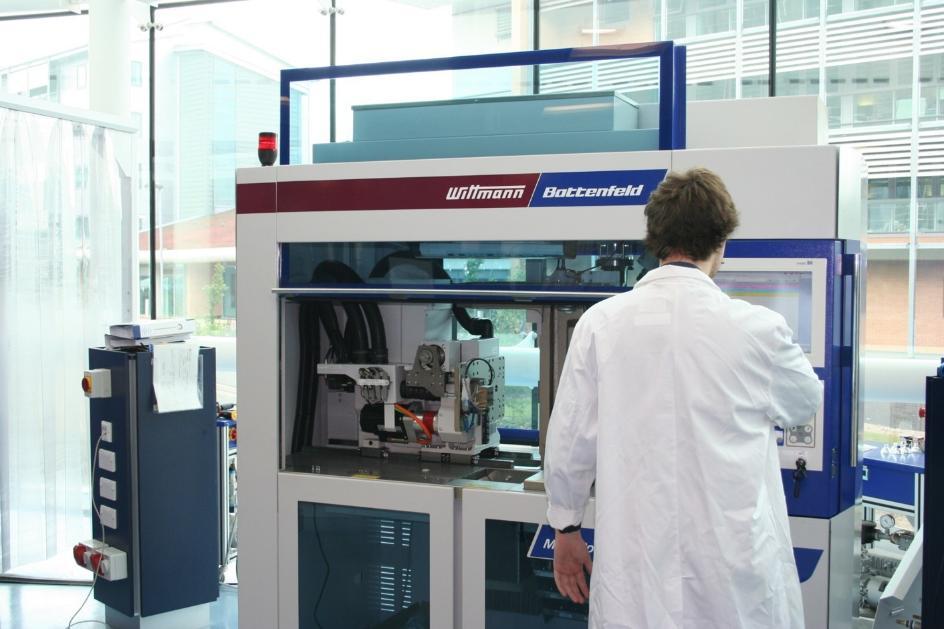
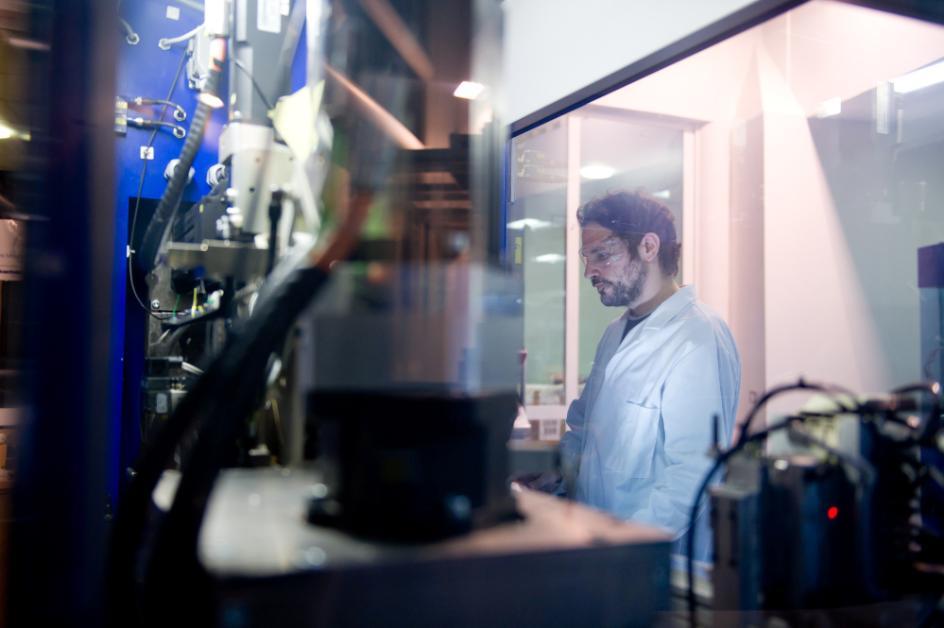
Bradford researchers have applied their micro and nano technology expertise to develop a new process and new material that have radically improved root canal treatment for thousands of dental patients.
Working with dental products company, DRFP, the Bradford Centre for Polymer Micro and Nano Technology team has developed DRFP’s idea for a better and easier way to fill a root canal’s cavity, especially the randomly-shaped ones. A bespoke material and a hydrophilic coating were created for the application to ensure a complete 3D seal– a major improvement on traditional treatment approaches. In addition, the Bradford team has been able to develop the polymer material so that it consistently combines the necessary ceramic powder ingredients to make it visible in x-rays and exhibits properties compatible with mass-manufacturing techniques - qualities that that DRFP had been unable to source anywhere else.
As well as overcoming the technical challenges of the material itself, the Bradford team has developed an automated production process using University micromoulding equipment and specialised techniques, which allows DRFP to meet the growing demand for its ‘Smartpoint’ root canal device.
Clinical trials have shown that the device has reduced the 5-year failure rate of root canal treatments from up to 30% to 1%, and patients have reported excellent healing and much lower levels of post-operative pain.
The technology has won several awards and DRFP has both expanded its product range and is scaling up its production after securing FDA approval for Smartpoint’s use in the USA. DRFP continues to work with the University in developing new solutions to manage the scale-up as the company grows and to refine its products further.
A range of new materials for the construction and medical industries have been developed thanks to the unique engineering expertise of researchers at the University of Bradford.
A team from the Centre for Advanced Materials Engineering has been able to apply its knowledge of polymers die drawing to develop a composite building material that is replacing wood in a wide range of applications. The new material is lighter, stronger and more durable than wood, whilst closely matching its structure and aesthetics. Patents have been filed in partnership with a US company, Dow Building Products, and a dedicated company, Eovations LLC, is marketing the potential of the manufacturing process and the material to architects, industrial engineers and product designers, with a reported increased market share running into millions of dollars.
Alongside this, the Bradford polymer die drawing expertise has also directly led to the development of innovative new ‘shape memory’ products for medical implants that help the surgical repair and healing of tissue damage, caused by injury and diseases such as osteoporosis and arthritis. Researchers perfected a ‘micro-scale’ version of the industrial process for use with biocompatible polymers, and a range of shape memory devices for fixing bone and soft tissue in place that are activated at body temperature have been produced. A number of patents have been filed in partnership with global medical technology company Smith & Nephew, and the new bioabsorbable products are proving easier for surgeons to fix into place, with patients benefiting from faster recovery time from procedures.
Research in the Centre for Sustainable Environments at the University of Bradford using novel boundary element methods has resulted in more accurate and efficient predictions of the noise created by roads and railways and of how sound spreads from the transport corridor, enabling more effective design and positioning of noise barriers and earth banks.
Bradford researchers refined two areas of modelling applied to noise prediction, which helped to ensure that two new models 'NORD2000 and HARMONOISE' were able to provide more accurate results.
NORD 2000 was commissioned by the Nordic Council of Ministries and is used by Scandinavian national and local governments, to predict noise from roads and railways. It is mandatory to use Nord2000 in Denmark for strategic noise mapping. The model is also used by the Federal Department of Health in Canada.
Both models were incorporated into six new software packages used around the world to map noise and design noise reduction strategies and barriers, for road, rail, wind turbines and industry. The software packages – Predictor-LIMA, CadnaA, ExSound2000, SPL2000, SoundPlan and WindPRO – are used in over 40 countries, including most European countries, Brazil, Australia, Canada, Hong Kong, South Korea, Chile, and Taiwan.
Engineers at the University's Automotive Research Centre have been applying their expertise to the technical, environmental and economic challenges faced by major vehicle and brake manufacturers for over 20 years.
Working directly with Bentley, Ford, BMW, Hyundai, Jaguar Land Rover, Volvo, Bosch and Toyota amongst others, Bradford has developed novel techniques and solutions that have led to increased safety, optimised performance, increased customer satisfaction as well as reduced manufacturing costs.
The team’s deep understanding of the underpinning science of dynamics, thermo-mechanics, contact and pressure distributions of components and the behaviour of materials under different forces has led to fundamental changes in the design of braking systems, components and materials used. In addition, the team’s ability to develop new techniques to accurately measure and predict performance at the design stage has been effective in avoiding later operational problems.
Bradford’s expertise has been used to investigate and fix specific problems such as brake judder and squeal noise – finally allowing one new vehicle to be released for production and substantially reducing warranty costs with another manufacturer.
Bradford researchers also share their knowledge with industry, through an annual “Braking of Road Vehicles” short course, attended by hundreds of engineers from all over the world, and regarded internationally as the ‘industry standard’ course in the road vehicle and braking industries. In addition, Bradford’s research is incorporated into Jaguar Land Rover’s in-house Master’s-level professional training programme.
A sound-proofing material made almost entirely from recycled industrial waste has been developed by researchers in the University of Bradford Centre for Sustainable Environments.
Designed to dampen the effects of vibration as well as absorb sound, the material was demonstrated to be up to 50 per cent more effective than other materials on the market - despite being around three times as thin.
The University of Bradford set up a spin out company, called Acoutech, to commercialise the technology used to produce the material.
This technology was licensed to Armacell, a global company specialising in insulation products, which began to produce sound insulation products under the brand name ArmaSound. These have been used throughout the world in sound-proofed linings for vehicles and industrial-scale machinery. The company is now able to use up to 95 per cent of its own waste materials to produce ArmaSound products.
A real breakthrough for the technology came when it was approved for use in large-scale pipework projects. This led to the development of a compact insulation system that is now used widely to reduce the noise from large pipes at facilities such as petrochemical plants and offshore oil platforms.
In 2012 Armacell were awarded a contract to supply ArmaSound to the Gorgon Gas Project, a $45 billion natural gas facility to be constructed off the coast of Western Australia. This is the largest facility of its kind ever constructed and will use ArmaSound insulation in around 200km of pipe-work.
The technology developed at the University of Bradford has had a huge impact on large industries worldwide which need to control noise pollution. Not only has it been effective in reducing noise pollution, it has also created an environmental benefit, through using recycled materials that would otherwise go straight into landfill.
Through Armacell, the technology has created a significant economic benefit as well, creating over 20 jobs and enabling the company to achieve significant growth each year.
Sustainable societies
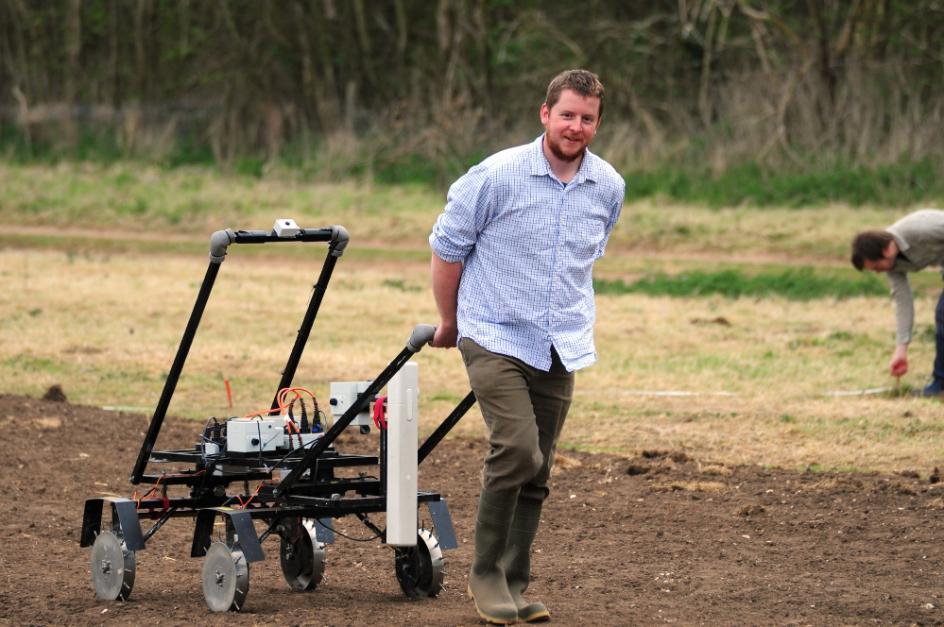

The cumulative body of research on ethnic relations by Professor Charles Husband formed the basis for a significant contribution to the creation of equal and inclusive services for the ethnically-diverse population of Western Australia: addressing the on-going quality of service delivery by all government departments.
Previous research at Bradford into the dynamics of service delivery and professional practice in multi-ethnic societies; working with, for example, midwives, nurses, social workers and journalists resulted in innovative work on inter-ethnic relations with government departments and professional bodies. This research led to an invitation to collaborate with the Equal Opportunity Commission of Western Australia (WA) where, in 2005, the Substantive Equality Unit (SEU) was established to challenge discrimination, and develop a policy framework to address the issue of culturally sensitive service delivery across all government departments.
Challenging discrimination within the Australian setting meant that sensitivity towards the distinctive history of Australian identity and politics had to be considered when addressing inequality. Professor Husband’s previous practical and academic work in Australia provided a background to his work on this initiative. Working with a small team of colleagues, and with critical political backing at key moments, a carefully staged programme of work was developed.
This included a phased development of education, evaluation of current practice, innovation and monitoring of changed practice. Operating with the slogan: ’If you want to treat me equally you may have to be prepared to treat me differently.’ This major policy innovation presented a challenge to pre-existing conceptions and modes of practice; and was rolled out across state government departments.
Among the issues addressed by the SEU was the experiences of Aboriginal and culturally and linguistically diverse (CALD) people when accessing the private housing rental market. Recommendations were drawn up to remove the barriers for Aboriginal and CALD people by the provision of training, guidelines and legislative regulation for industry operators.
The SEU continues to impact positively on the lives and opportunities of minority groups living in WA, influencing government departments to increase the accessibility and use of services by people from minority backgrounds.
For over a decade, Bradford archaeologists have worked in Shetland, to reveal one of the best-preserved iron age sites in Europe. The Old Scatness Project has had public access at its heart right from the start of the dig, with the team winning the British Archaeological Award for its public presentation.
Today, guided tours of meticulously reconstructed houses inhabited by ‘living history’ demonstrators give visitors a superb experience of what iron age life might have been like. Researchers worked in partnership with the Shetland Amenity Trust to excavate a broch, or roundhouse, surrounded by an iron age village. Specialist craft workers now demonstrate iron age skills to visitors, including metal and jewellery working, pottery, textiles and rope making. Elsewhere in Shetland, manufacturers have created products – including an Old Scatness Ale – based on the findings at the site that have contributed to the cultural identity of the islands, as well as to its economy.
The research carried out by the Bradford-led team is also enriching education in Shetland. Education packs based on the site, which include replica artefacts, have been developed for 32 schools and schoolchildren visiting the site participate in traditional craft activities.
For the archaeologists themselves, a priority was to share knowledge and best practice. A centre for field training was established at the site for students from many different universities. Local volunteers were also involved in the project from the beginning and took the opportunity to train at the centre alongside the students. These approaches have since been adopted as a standard for archaeological work across the region.
The quality of the work carried out at Old Scatness has made a significant contribution to Shetland’s heritage and its tourism trade and has also enabled the site to be considered for World Heritage Site status.
Prisons in England and Wales now respond to equality and diversity issues in a way which benefits both the staff and prisoners, following the introduction of a national equalities framework influenced by University of Bradford research in Psychology.
Following the racially-motivated death of an inmate in a young offenders’ institution in 2000, policy and practice in prisons had focused almost exclusively on race and ethnicity, without addressing the need to recognise the breadth of inequalities experienced by other diverse minorities. Bradford academics collaborated with the National Offender Management Service (NOMS), the Race Equality Action Group, the Diversity Manager of a high security prison as well as with prisoners representing diversities including age, sexual orientation, disability, transgender, religion/belief and race/ethnicity. The knowledge generated through these collaborations has impacted directly on NOMS national policy development as well as local policy and practice.
The resulting NOMS national equalities framework adopts a key recommendation of the research which is greater prisoner consultation when developing guidelines for prison staff regarding diversity. Implementation of these guidelines means that staff benefit from improved support and confidence in responding appropriately and effectively to diversity issues, and prisoners benefit indirectly through their improved experience of staff responses. For example, in one prison guides have been developed to assist staff in respecting diversity when searching prisoners, particularly transgender, and also clarifying the rights and responsibilities of both staff and transgender offenders.
Based on other research findings, NOMS commissioned good practice guidance and a national training package for prisoner equalities representatives, and developed mediatory rather than adversarial methods for dealing with complaints relating to diversity issues. The research found that prisoners prefer to resolve issues of diversity and inequality in a non-confrontational way, confirming the importance of face-to-face interactions between staff and prisoners to ensure fairness in prisons.
Victoria Lavis and colleagues research has transformed prison policy and in 2015 their research received national recognition for continuing work in this area in prisons in England and Wales when they awarded second place in the Economic and Social Research Council (ESRC) prestigious Celebrating Impact Prize 2015 for Outstanding Impact on Public Policy.
Geoprospecting 'the science of finding features and sites hidden beneath the earth's surface' has become a commonplace archaeological tool, and is familiar to the public via TV programmes such as Time Team.
Bradford researchers in Archaeological and Forensic Sciences were early pioneers of technologies used in geoprospecting which are now used widely throughout the world. The techniques offer a way of uncovering important archaeological finds while minimising damage and disruption to potentially sensitive sites.
The university has built long-term partnerships with leading surveying and manufacturing companies and helped develop new technology and strategies for low-impact survey - Bradford Centre for Archaeological Prospection. These are used by heritage management organisations to inform planners who need detailed archaeological information prior to development work. One of the partners, Geoscan Research, currently supplies these geoprospecting systems throughout the EU.
The wealth of geophysical data produced through geoprospecting presents challenges for archiving and storing. Bradford’s research into this area has influenced the development of new guidelines, including those by the Institute for Archaeologists. It has also underpinned guidance on geophysical survey drawn up by English Heritage, which is recognised worldwide as a benchmark for evaluating sites.
The technology developed at Bradford has not only benefitted large scale surveys, but it has also enabled smaller community-based groups to get in on the act. Thanks, in part, to programmes such as Time Team – to which members of the Bradford geophysical group have been a long-term contributors – public understanding of geoprospecting has grown. Since 2008, the Heritage Lottery Fund has provided more than £1 million to community-led projects that are using geophysics – that’s a great shift away from watching to doing archaeology.
University of Bradford research in the School of Social Sciences has directly influenced changes in TUC national policy, leading to an increased engagement with - and recruitment of - black and ethnic minority (BME) and migrant workers.
The national and regional Trades Union Congress (TUC) recognised that developing alliances between unions and community groups of all kinds was the key to increased recruitment. Building on an established reputation with the TUC, the researchers undertook various projects to find out how this could be worked towards and achieved. In the first instance, survey findings showed that trades unions were not viewed negatively amongst these communities, thereby opening up the possibility for collaboration and community engagement.
The Bradford researchers presented the TUC with five recommendations to effectively engage and build alliances with a diverse workforce, which were disseminated via presentations and collaborations with individual unions. As a direct result, UNITE employed a full-time community co-ordinator based in the Yorkshire and the Humber region and the GMB recruited a part-time officer to implement recommendations throughout this region.
Presentation of the report findings were made to the General Secretary of the TUC which has resulted in the researchers’ recommendations being incorporated into a national policy document, ‘Swords of Justice and Civil Pillars’. This policy is designed to change unions’ approach to engaging with minority ethnic communities and to recognise the skills, qualifications and experience of migrant workers, leading to increased and improved participation.
Further research identified and publicised examples of best practice where unions were already working with community groups. The resulting report recommended continued support for anti-fascist groups, community advice centres and community learning centres. A third project, commissioned by Yorkshire and the Humber TUC, aimed to identify the benefits that trades unions were already generating by providing, for example, training or language skills to migrant workers.
A model developed by researchers in accounting at the University of Bradford which aims to accelerate international trade for developing countries has been adopted by the G20 group of finance ministers.
Successful international investment and trade is viewed by the United Nations as a main driver of growth in both developing countries and countries with transitional economies. The research carried out at Bradford has led to the development and adoption of international policy tools in two areas of foreign investment – agriculture and value chain – helping build successful, long-term business relationships between foreign enterprises and developing countries.
The Foreign Direct Investment (FDI) model captures the complexity of the effects of foreign investment in the short, medium and long term on developing countries. The FDI model was used in the formation of international policy tools adopted by the G20 finance ministers and central bank governors in 2010.
The model has been used in various contexts, including in the formulation and research on Principles for Responsible Agricultural Investment (PRAI) - a framework aimed at ensuring that investment in agriculture in developing regions, such as Africa and South East Asia is beneficial overall. Similarly, a methodology to Measuring and Maximising Economic Value Added and Job Creation from Private Investment in Specific Value Chains (IMMEV) is being used to support the G20’s development ‘pillar’ and has been implemented in six countries: Bangladesh, Cambodia, Dominican Republic, Laos, Mongolia and Mozambique.
Professor Hafiz Mirza in the School of Management is currently seconded to the United Nations Conference on Trade and Development (UNCTAD) as Chief of Investment Issues Research - a culmination of the long-term engagement between Bradford researchers and transnational policy organisations. The UNCTAD motto is ‘Think, Debate, Deliver’ and Professor Mirza’s role includes work on economic development impact, linking to related work throughout the UN system including its sister organisations such as the World Bank.
Since the mid-1990s, the School of Social Sciences has been influencing global biosecurity through a portfolio of research reports and briefing papers used by the 170 State members of the Biological and Toxin Weapons Convention (BTWC) to continually strengthen the treaty.
The BTWC was the first multilateral disarmament treaty banning the development, production, stockpiling of an entire category of weapons that could be used to generate disease in humans, animals and crops. Funded by major international charitable and governmental bodies, Bradford’s research portfolio has incorporated insights into new biology applications, such as genetic weapons to target ethnic groups, and highlighted how poor biosecurity practices could lead to accidental misuse of life sciences research, with catastrophic consequences.
The Disarmament Research Centre now informs key recommendations and agenda items for the regular meetings between the Convention’s member States. Staff from the Research Centre have been invited to participate in and deliver presentations at virtually every workshop, briefing and expert working group since 1996 and individual member States regularly cite Bradford’s research in their own proposals and discussions relating to the Convention.
Bradford has further underpinned the aims of the treaty by developing training resources for life scientists around the world. Twenty lectures exploring issues around ethics, best practice responsible conduct and the potential threats posed by technologies developed through life science research are accessible online free of charge in a variety of languages.
In 2010 Bradford launched the world’s only university-accredited module for scientists to train their colleagues in bioethics and biosecurity, a programme completed by life scientists from 14 countries. Recent funding has enabled the Bradford team to tailor the online resources to specific issues and needs of individual countries where biosecurity training is particularly pertinent, with the US Department of State commissioning the team to deliver training in Iraq.
Since the Bradford riots in 2001, research at Bradford has helped to defuse underlying tensions between deprived, multi-ethnic communities, and also between these communities and the local council and police. The aim is to strengthen community participation and engagement in building resilience throughout the city by encouraging dialogue and partnership between previously disparate social groups.
Building on earlier research into civil society and social movements in Latin America, Bradford academics founded the Programme for a Peaceful City (PPC) in 2001 to apply research findings to real community issues. The International Centre for Participation Studies (ICPC) was established in 2004 as a research hub, bringing together community and institutional partners to share knowledge, build connections to a range of community groups and enhance the community ‘voice’.
Researchers found that grassroots-based organisations are instrumental in influencing the effectiveness of policy, extending its reach and widening community participation. Widening participation is essential in building the community’s resilience when faced with external pressures. For example, in 2010, the PPC drew on learning from the 2001 Bradford riots to undertake peace-building interventions in advance of potential external provocation from an English Defence League (EDL) rally in the city. By taking part in over 20 discussions between activists, Bradford City Council and the police, the PPC created open and successful communication channels and also negotiated the use and training of ‘street mediators’ to reduce the rally’s impact on the city and its inter-community relationships.
The ICPS/PPC has helped change the culture of policing potential unrest in Bradford by securing support for grassroots peacekeeping and encouraging youth engagement with community resilience efforts. In July 2013, a community university was launched as ‘Comm-Uni-ty’, bringing local activists together to learn with academics about power and participation – a model which could be used in other cities.
COVID-19 Research
In response to the Covid-19 pandemic, the University of Bradford invested in 21 research projects that deliver contributions to the understanding and response to COVID-19 and its impact in the City and the region. These projects considered the impact of the pandemic on healthcare workers, consumers, businesses and financial markets, as well as social distancing optimisation and novel drug screening systems.
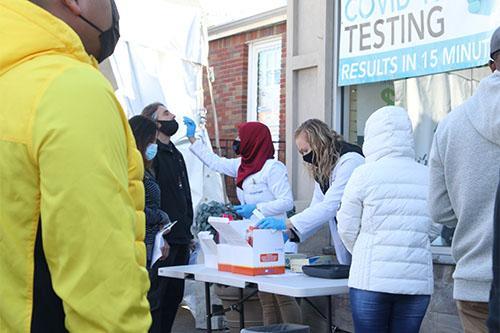
Even more stories
Find our latest articles on our impact page, and there's more news articles on our business pages.
